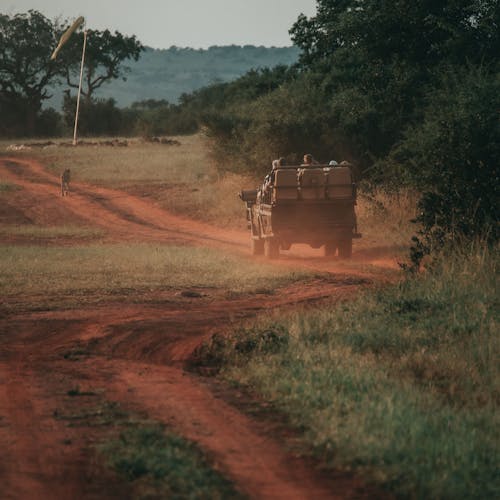
International research at Tuli
A stakeholder review of the Limpopo-Shashe Transfrontier Conservation Area, southern Africa, as a tool to promote and improve adaptive management.
I was lucky enough to spend two fantastic nights at the Tuli Conservation Project in Botswana in July 2006. The reason for my visit was to collect data for my Masters's degree, which I completed in October. I was researching the Limpopo-Shashe Transfrontier Conservation Area (LS-TFCA) – a conservation initiative that will include the reserve on which the Tuli Conservation Project is conducted.
The LS-TFCA is situated at the confluence of the Limpopo and Shashe Rivers, encompassing areas in three countries – Botswana, South Africa and Zimbabwe. This TFCA has the potential to offer a diverse tourism package including wildlife and cultural heritage. It is a complex TFCA in that it has a diverse array of stakeholders, multiple land use options that need to be incorporated, and an environment of changing ecological, political and socio-economic conditions in all three countries in which it is situated. My research focused on the necessity for an adaptive management approach that could facilitate the incorporation of this variety and change. To better inform decision-makers, it is a good idea to include a stakeholder review as a first step in implementing an adaptive management framework. In order to promote and improve the implementation of adaptive management, my study provided a current status report of stakeholder values, perceived benefits, opportunities, issues, concerns, and current and potential threats facing the LS-TFCA. Specifically, I aimed to answer the following questions:
- Who are the stakeholders of the LS-TFCA?
- What do the stakeholders perceive as the main benefits and opportunities of the LS-TFCA?
- What are the stakeholder values that make the LS-TFCA significant?
- What are the concerns and issues identified by the stakeholders?
- What are the main stresses and threats facing the LS-TFCA?
- What is the current policy and management environment of the LS-TFCA?
The research that is conducted by the Tuli Conservation Project is unique in the LS-TFCA region. There is one other reserve in the area that conducts research, but this data is not as extensive as the Tuli Conservation Project. Other reserves also do some game monitoring, but this is highly inconsistent and sporadic. Once the LS-TFCA has been implemented, I feel that the data collected by the Tuli Conservation Project will be very useful in order to assess the impacts of the TFCA on animal populations and movements.
I contacted Sarah in London for advice on potentially visiting the Tuli Conservation Project in Botswana to include their views in my report. Sarah was extremely helpful and put me in touch with Martin who helped to organise my stay at the camp. My partner and field assistant (Almero) and I managed to get to Tuli for two nights in July. Unfortunately, my fieldwork time was very tight and two nights was all we had – both of us could happily have stayed there for months! Stuart and Annelien showed us more hospitality and warmth than I have ever experienced. Their energy and enthusiasm overflowed and they made us feel so welcome. We joined the group on all of their activities for the 2 days – morning drives, evening drives and walks – to see first-hand how and what data is collected. I also had the opportunity to chat with Stuart and Annelien about the LS-TFCA and what they knew about the project. The students also showed me all of their reports and datasheets and the data collected so far.
The full write-up of my research can be downloaded, but I will include a brief summary of my findings here. Ecological benefits, particularly the free movement of animals, were rated as the most important benefit, with social and economic (related to tourism) benefits also being prominent. In general, stakeholders displayed strong intrinsic and indirect use (ecological) values. The top issue highlighted by stakeholders was poaching; a current threat that many hope the LS-TFCA can help to reduce. Tension between stakeholders, particularly concerns surrounding elephant management, is also a current threat to the successful development of the LS-TFCA. If you are interested, further details can be found in the full report!
My experience at Tuli was second to none. From beginning to end, I experienced only warmth and generosity from all of those involved in African Conservation Experience (ACE) and the Tuli Conservation Project. I feel so fortunate to have met such lovely people and to have had the opportunity to see first-hand the fantastic work that ACE, Stuart and Annelien are doing in Tuli. My thoughts are that the data that has been collected could be incredibly useful in future to assess how animal populations and movements could potentially change once the LS-TFCA is implemented.
Although there are many problems facing the successful implementation of the LS-TFCA, it is an extremely exciting conservation initiative. The information from my report would be useful to the stakeholders of the LS-TFCA, including those responsible for decision-making and policy in order for them to determine which interventions are more likely to succeed to achieve LS-TFCA objectives.
My study was made possible by a small grant from the CBBIA (Capacity Building for good practice in Biodiversity and Impact Assessment) programme of the IAIA (International Association for Impact Assessment) through a donation from the Dutch Government.
Anne Treasure
